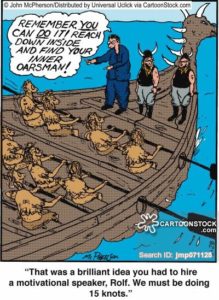Scientific research is a fundamentally human endeavor. Our innate curiosity drives us to explore and understand the world around us. But as Scott and Casey dig in on this grand topic they learn it can get complicated. Fast. We explore the impact of funding sources on the scientific processes and outcomes. We look at the human incentives for rewarding scientists and ask, are we rewarding the right things? As usual, we find some answers, but even more questions.
Episode 4 – Let’s Go to Alpha Centauri!
We’ve sent humans to the moon. We’ve sent probes to every planet in our solar system. But we’ve never tried to go to another star before.
Yuri Milner has launched the Breakthrough Starshot Initiative to do just that: send man-made probes to the Alpha Centauri system 4.3 light years away.
Casey and Scott dive into this initiative, what it will take to make it happen technically, economically, and what it means for human space exploration.
Episode 3 – What is healthy farming? Part 1
What is the most environmentally sustainable diet? What is the healthiest diet?
Mindthunder digs deep on farming and nutrition, and uncovers more questions that need answered.
Episode 2 – Modern Vision
In a world of prescription glasses, contact lenses, and LASIK, Mindthunder asks: have things always been this way? What are the respective roles of genotype and phenotype in modern vision? Casey and Scott search for answers in genetics, environment, behavior, and diet with their trademark “seat of the pants” style.
Episode 1 – It’s a podcast!
Show notes:
17:12 – Who built the pyramids in the Giza pyramid complex? Skilled workers feasting on prime beef? And when? Graham Hancock is the writer whose name Casey was seeking.
21:30 – Five-year plans of China – first plan put in place in 1953; thirteenth plan put in place in 2016 (no apparent hundred-year plan)
Popularity of the name “Millard” in the U.S. over time:

Teddy Roosevelt was Assistant Secretary of the Navy between April 19th, 1897 and May 10th, 1898.
12:30 – New Horizons team (pre-cursor to the full-fledged NASA mission) was formed in December 2000, so the mission has been in the works for fifteen-plus years.
13:34 – Breakthrough Starshot (and The Herlihy Boy)
27:30 – “Yo we like a twig in the nile we just flowin'” – Lovely Daze by DJ Jazzy Jeff and Fresh Prince
28:10 – Ken Burns’s Stanford commencement speech
37:18 – Obama on same sex marriage; 2008: “I believe that marriage is the union between a man and a woman.” (0:03) 2012: “I think same sex couples should be able to get married.” (3:04)
38:33 – Mount Rushmore: George Washington, Thomas Jefferson, Theodore Roosevelt, and Abraham Lincoln. The average American can name eight presidents, according to this survey. All four “Rushmore” presidents were in the top ten of the most remembered presidents, with the exception of Teddy Roosevelt.
38:43 – Millard Fillmore (January 7, 1800 – March 8, 1874) was an American statesman who served as the 13th President of the United States from 1850 to 1853. He was the last Whig president, and the last president not to be affiliated with either the Democratic or Republican parties.
Places named after Fillmore: Fillmore, New York; Fillmore County, Minnesota; Fillmore County, Nebraska; Millard County, Utah and its county seat, Fillmore, Utah; Millard Fillmore Elementary School, Moravia, New York; Fillmore Elementary School, Davenport, Iowa; Millard Fillmore Gates Circle Hospital, Buffalo, New York; Millard Fillmore Suburban Hospital, Williamsville, New York; Millard Fillmore Academic Center at the University at Buffalo’s Ellicott Complex; Fillmore Glen State Park, New York; Fillmore Park in Alexandria, Minnesota; Fillmore Street and the surrounding neighborhood in San Francisco after which, in turn, the Fillmore Auditoriums were named, both East and West.
40:00 – Dan Carlin’s Hardcore History podcast, episode 49, “The American Peril” on the Spanish-American War
42:20 – RadioLab podcast episode on American football.
The Spanish–American War was fought in 1898.
45:16 – ISideWith Political Quiz
46:35 – Apollo 13 film was released in 1995.
Moon landing conspiracy theories
48:15 – NASA funding as percentage of GDP peaked at 4.41 in 1966.

48:20 – Lyndon B. Johnson’s term as President began in 1963 upon John F. Kennedy’s assassination.
48:26 – The last flight of an Apollo mission was on December 7th, 1972.
48:40 – Apollo 17 marked the sixth moon landing.
50:40 – Buzz Aldrin supports private sector involvement in space travel.
52:08 – Particle Fever film
54:00 – Some Earthlings attempt to enumerate international space law via the United Nations Office for Outer Space Affairs.
57:05 – The United Launch Alliance is, in fact, a joint venture between Boeing and Lockheed.
Presidential approval ratings appear to typically go down over the course of the term in office, but what about historical voter satisfaction with the candidate choices?
There were twelve manned Apollo missions (1 and 7 through 17).
59:20 – Third party payer systems: “funky” because the direct relationship between buyer and seller is severed.
1:00:05 – Dealing with insurance companies can feel similar as a consumer to dealing with any oligopoly.
1:03:00 –

1:04:15 – Scientific paywalls as a taxpayer double-dip.
1:09:20 – John Oliver on scientific research